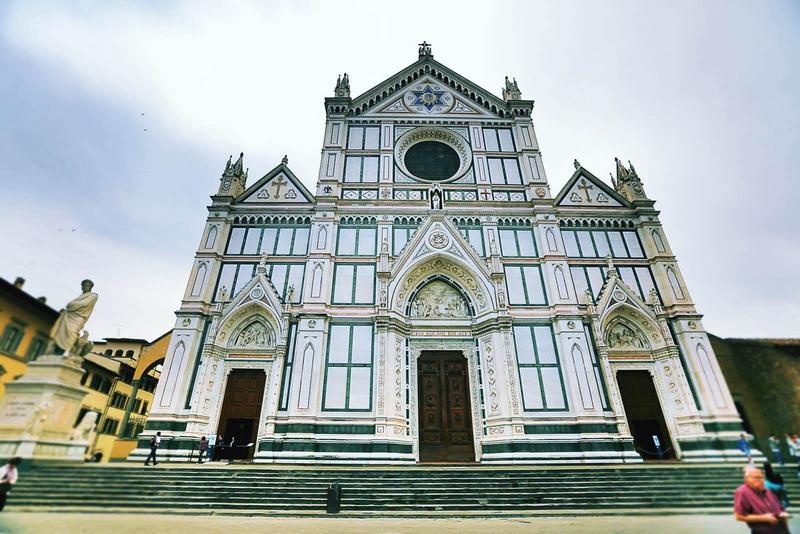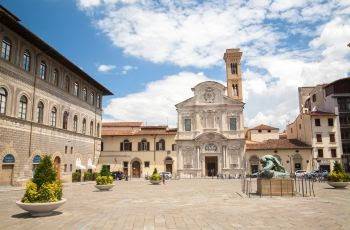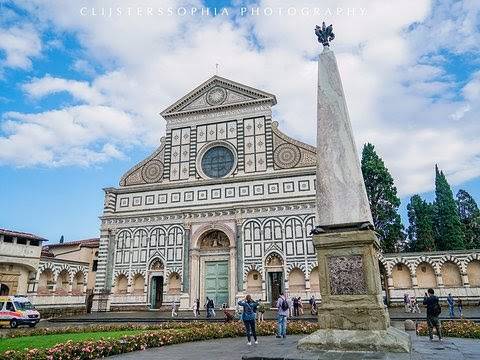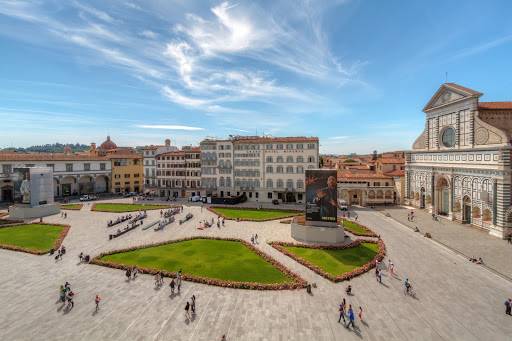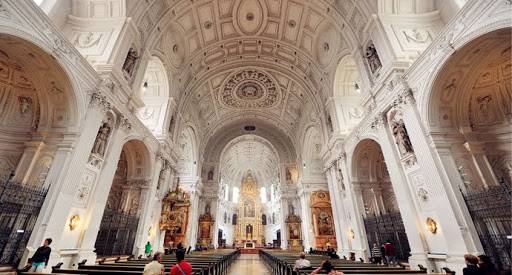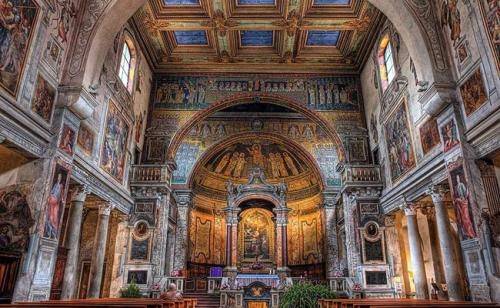One of the main reasons most people visit the Uffizi Gallery is for Botticelli. The Church of All Saints (Chiesa di Ognissanti) is the final resting place of the painter Botticelli and Ghirlandaio. Botticelli's fresco 'Saint Augustine in His Study' holds a significant position. The largest fresco in the church is Ghirlandaio's 'The Last Supper', which, like Leonardo da Vinci's work, is located in the refectory of the monastery. This is also the only place where you can see Ghirlandaio and Botticelli 'competing' side by side.
The Basilica of Santa Maria Novella, which you can encounter as soon as you exit the train station, is the first papal church in Florence. The upper half of the facade, made of alternating black and white marble, was completed in the 15th century by architect Leon Battista Alberti to match the original Gothic style of the lower half. When set against a backdrop of blue skies and white clouds, it becomes the most beautiful scenery.
Piazza Santa Maria Novella
Opposite the church is Piazza Santa Maria Novella, where markets are held periodically. If you happen to come across one, don't miss out on experiencing the vibrant atmosphere of Italy. You might even find something you love.
Hidden in the bustling city yet often overlooked, the square-shaped Orsanmichele was originally just the vegetable garden of the Monastery of St. Michael. It began to be gradually converted into a church in 1380. The first floor features 13th-century arches and was initially used as a loggia for the grain market. The second floor was used as offices, and currently, the first and second floors serve as a museum. The third floor was used as one of the city's granaries to withstand famine and sieges. The exterior of the building is adorned with sculptures of patron saints of various professions, such as bankers, merchants, and artisans, created by Renaissance artists. Notable works include Berti's 'Saint Matthew' and Donatello's 'St. George'.
Cathedral Museum
The Cathedral Museum (Museo dell'Opera del Duomo), as part of the Florence Cathedral, houses a collection of artworks and significant architectural elements that were originally displayed in the church and outdoors. It offers a comprehensive understanding of the development and changes in Florentine visual arts during the Renaissance.
Baptistery of San Giovanni
The exquisite octagonal Baptistery of San Giovanni (Battistero di San Giovanni) is located directly opposite the cathedral. Its architectural style is somewhat similar to Giotto's Campanile and the Florence Cathedral. The most noteworthy features are the three bronze doors depicting stories from the Old Testament. Inside the baptistery, the ceiling is adorned with mosaic marble tiles, with the most famous being the mosaic of the Last Judgment. This artwork, divided into three spaces—heaven, earth, and hell—was created by Michelangelo during a period of spiritual and faith crisis, expressing his inner turmoil and pain.
